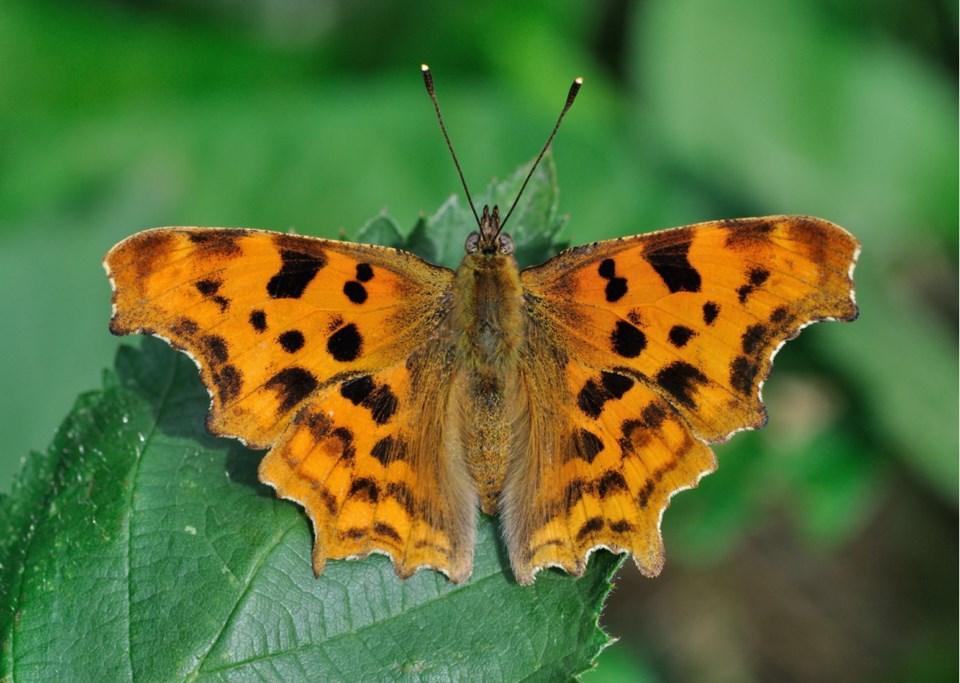When Nature Boy announced that he was off to chase nymphs the other morning, I decided it best to not react.
If he wants to spend his weekend mornings scooping pondwater for dragonfly larvae, that’s his business. Immature dragonflies are called nymphs or, sometimes, naiads.
Then Nature Boy said he also hoped to capture some satyrs. Further probing led to additional mythological references — Apollo, Danaë, Delphi, Phoebe, Parnassus. “No, not Parnassus,” he said. “That’s only in the mountains.”
Well, obviously.
Nature Boy wasn’t going pond-mucking. He was going butterfly-netting.
We can thank a 312-year-old Swede for making a harmless bug-hunting hobby seem like tempting fate with capricious Greek gods. In the mid-1700s, Carl Linnaeus revamped the way we classify, categorize and name living things in related groups. He leaned heavily on the Greek and Roman classics when he named the butterfly groups.
And so we have the Parnassian butterflies — found in mountain meadows — and the Satyrids, Nymphalids and Danaianids, as well as species such as Danaus plexippus, Polygonia faunus, Parnassium phoebus and Phoebis sennae. These are scientific names, based on the two-named system to distinguish genus-plus-species that Linnaeus put in place and is still used in biology today.
Mythology sometimes carries over to common, English names. The Apollo butterflies, the ox-eyed satyr, satyr anglewing, small wood-nymph, Persius dusky-wing, Icarioides (for Icarus, who flew too close to the sun) blue, faun comma, gorgon copper and Great Basin wood nymph are examples.
Double-handled scientific names prevent confusion. No matter what language you speak, scientific names remain the same and so allow biologists to understand each other, even if nobody else can.
But while butterflies’ science names are colourful, their common names reach whimsical heights rarely found with other groups of critters. Even so, the names are largely descriptive.
The family of butterflies called blues are, well, blue. The coppers are orange-coloured. The dusky wings have dark wings. The marble butterflies use marbled colouring as camouflage, while the sulphurs and the whites … you get the idea.
The anglewings have wings with notched and angled edges. The crescent butterflies get their name from the crescent-shaped spot near the margin of the hind wing. The comma butterflies have a white, comma-shaped mark on their outer wings, while the question mark butterfly is punctuated with a white crescent-plus-dot. The fritillaries and checkerspots sport checkered patterning, while “hairstreak” refers to the fine lines that decorate the hairstreak butterflies’ wings.
The brushfoots, or four-legged butterflies, are named for their reduced forelegs, which are frequently hairy and resemble — whaddayaknow — brushes. Butterflies in the gossamer wing family typically have wings that are so sheer and delicate, they look like … gossamer!
The skippers, however, are named not for their looks but for their behaviour — their fast, darting flight.
Now take those descriptive family names and zero in on individual species.
The dusky-wings come in dreamy, sleepy, mournful and funereal varieties. Those called “skipper” can be everything from fiery to silver-spotted — even common checkered. The coppers come in many hues, including lustrous, ruddy, and — confusingly — blue or purplish, and the spring azures, greenish blues, and square-spotted blues suggest an array of blues. The sulphurs can be cloudless, dainty, orange and — redundantly — yellow, for example.
We have western cloudy-wings, sooty gossamer-wings and common sooty-wings.
And don’t forget those nominal outliers, the butterflies called mourning cloak, painted lady, California dog-face, Mormon metal-mark and red admiral (apparently derived from “admirable”).
When Nature Boy goes hunting nymphs and satyrs, Danaë, Apollo and gorgons, he isn’t reviewing his ancient mythology, he’s chasing poetry.
He’s also brushing up on his brushfoots, and is seeking the dusky-winged Erynnis propertius, whose larvae munch on Garry oak leaves and whose adults prefer sip nectar from blue camas, Hooker’s onion and other Garry oak meadow flowers.
And he hopes to find his marbles. For 90 years, the Island marble butterfly was to be lost forever but, in 1998, a butterfly enthusiast netted two of the small white butterflies on the San Juan islands. It is believed a population may have survived on Vancouver Island.
As to the word “butterfly,” the Oxford English Dictionary cites the word’s use from the year 1000, when “buttorfleoge” appeared in the written, Old English works of an Anglo-Saxon abbot.



